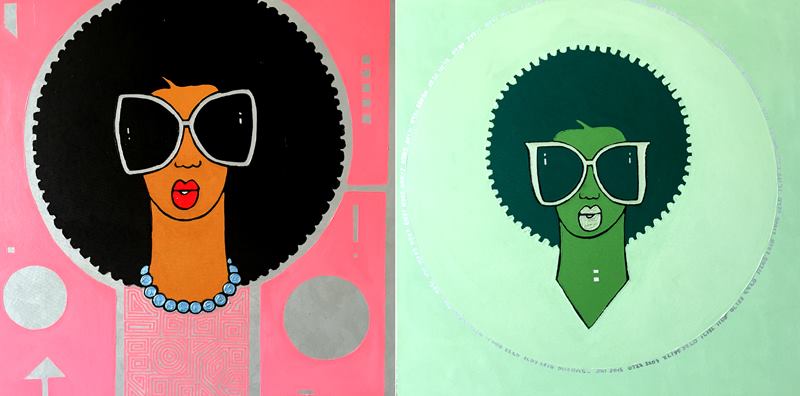By Abdi Ali
Published October 21, 2019
 Two people are installed inside an iconic Victorian vitrine as a temporary display that is photographed. The installation calls attention to the relationship between objectifying the human body, religion, violence and the collecting of artefacts as being interrelated actions of Western colonialism.
Two people are installed inside an iconic Victorian vitrine as a temporary display that is photographed. The installation calls attention to the relationship between objectifying the human body, religion, violence and the collecting of artefacts as being interrelated actions of Western colonialism.
Alongside the individuals, the installation displays several objects, among which is a prototype of the 1853 Enfield Pattern rifle-musket that was modernised by Augustus Pitt-Rivers, the founder of the Pitt Rivers Museum and played a major role in colonial conflicts such as the Indian Uprising of 1857 and in the Anglo-Zulu War of 1879.
RELATED: Preserving Culture Through Art
 This is Vitreous Bodies, a project that seeks to draw attention to the links between colonialism and museum collections, particularly the relationship between the forcible removal of cultural artefacts and the way that heritage is defined in Western museums primarily by visual encounters with objects, through temporary display has been created.
This is Vitreous Bodies, a project that seeks to draw attention to the links between colonialism and museum collections, particularly the relationship between the forcible removal of cultural artefacts and the way that heritage is defined in Western museums primarily by visual encounters with objects, through temporary display has been created.
The installation of Dr Errol Francis and Professor Victoria Tischler in the temporary display was photographed on February 29, 2019 at Oxford University’s Pitt Rivers Museum where the finished work, a diptych, will be exhibited at a yet to be set date in 2020.
RELATED: Tribute to the Kenyan Who Shaped World Opinion on African Worldview
“I am delighted by this collaboration with the Pitt Rivers Museum. The project demonstrates the Museum’s commitment to a decolonising agenda in relation to its collection and public engagement and I look forward to further collaboration on the forthcoming exhibition,” says Dr Errol Francis, Artistic Director of Culture&, an organisation that aims to diversify the UK arts and heritage sector through workforce initiatives and public programmes, who both performed and took photos of the installation.
 Andrew McLellan, Head of Learning at Pitt Rivers Museum, says, “Working with artists in museums is an important way of contextualising collections and asking critical questions. It empowers the visitor to think for themselves, making collections relevant to the individuals who visit. When Errol suggested this particular decolonisation intervention it seemed like too good an opportunity to miss. You can put an essay on the wall but it is only one perspective and people might not choose to read it. Art can be interpreted in multiple ways.”
Andrew McLellan, Head of Learning at Pitt Rivers Museum, says, “Working with artists in museums is an important way of contextualising collections and asking critical questions. It empowers the visitor to think for themselves, making collections relevant to the individuals who visit. When Errol suggested this particular decolonisation intervention it seemed like too good an opportunity to miss. You can put an essay on the wall but it is only one perspective and people might not choose to read it. Art can be interpreted in multiple ways.”
Pitt Rivers Museum of University of Oxford that was founded in 1884 is said to be ‘the most important ethnographic museum collection in the UK outside the British Museum’.
RELATED: Gospel Singer Goes Mainstream in Comeback, Courts Controversy





